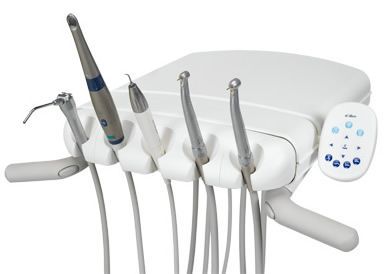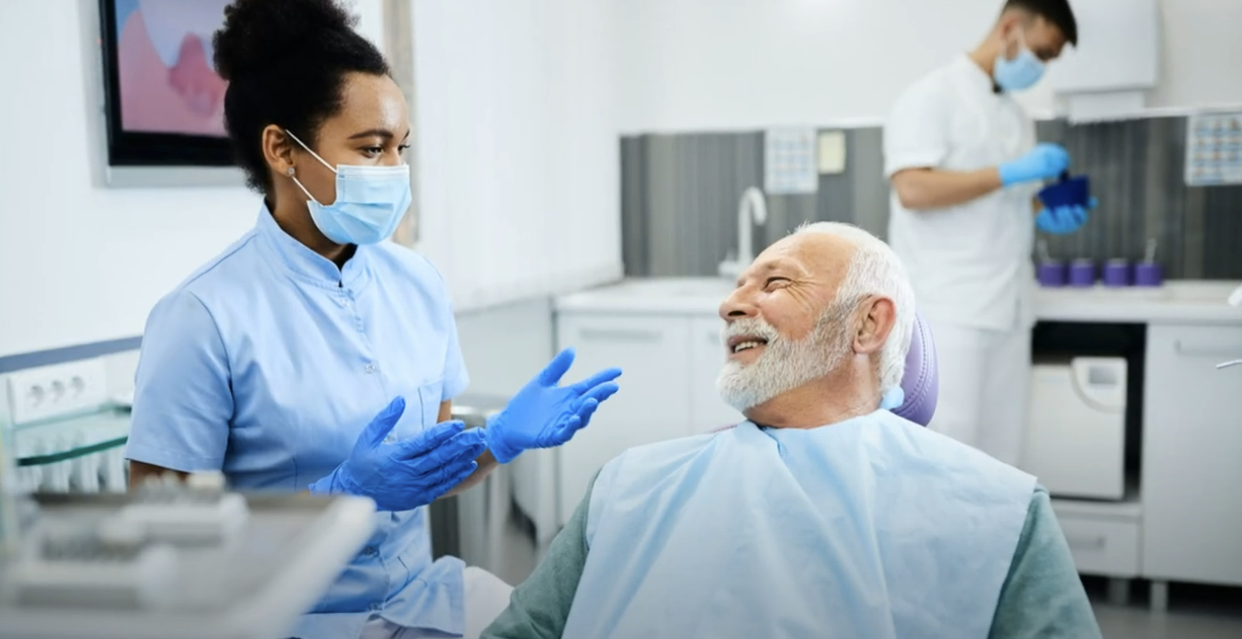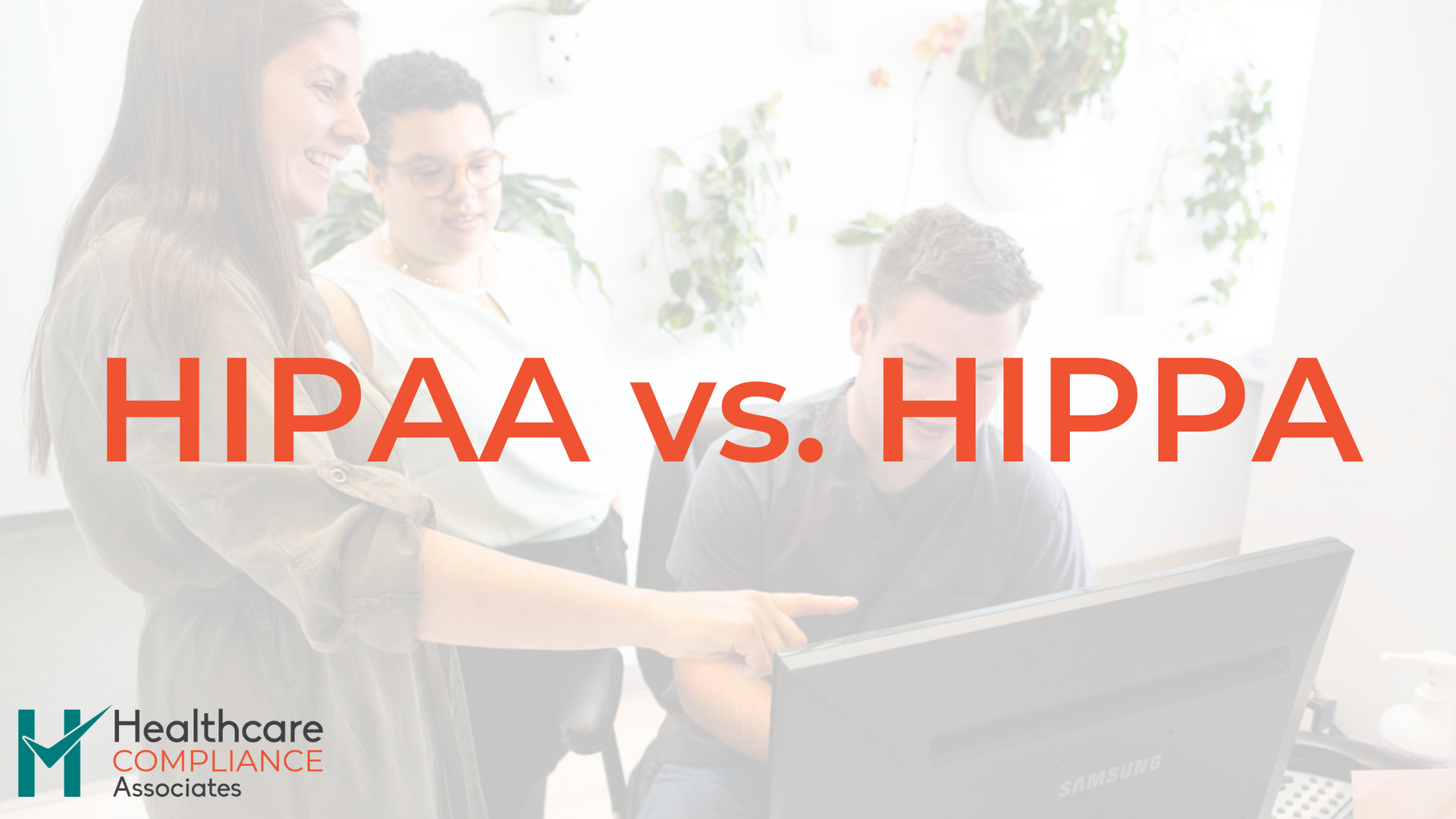
Dental Unit Waterline Safety: Preventing Infections in Your Practice
Kelli Ngariki • February 7, 2025
Why Regular Waterline Maintenance is Critical for Every Dental Practice

The tragic incident in Anaheim, California in 2016 brought attention to the crucial issue of maintaining dental unit waterlines. This distressing event occurred at a pediatric dental office, where contaminated water was unknowingly used during procedures, including pulpotomies, on young patients. As a result, numerous children suffered from severe infections, leading to the necessity of strong antibiotics, multiple surgeries, excruciating pain, and the potential for facial disfigurement.
Dental unit waterlines (DUWLs) are crucial components in dental care settings, ensuring the delivery of water for various procedures. However, if not properly maintained, they can harbor harmful microorganisms, posing a risk to both patients and staff. Here are some best practices to keep your DUWLs safe and clean.
The Risks
Dental unit waterlines can become breeding grounds for biofilms, thin layers of bacteria that adhere to surfaces. If contaminated water is used during dental procedures, these biofilms can lead to infections. Therefore, regular maintenance and monitoring are essential to prevent microbial contamination.
1. Waterline Cleaners
Routine use of chemical cleaners (germicides) specifically designed for DUWLs is a key practice. These cleaners help to break down and remove biofilms. Follow the manufacturer’s instructions for the correct dosage and frequency.
2. Regular Flushing
Daily flushing of waterlines is an effective way to reduce the accumulation of bacteria. It is recommended to flush each waterline for 20-30 seconds between patients and for a longer duration at the beginning and end of each day.
3. Water Quality Testing
Regular testing of water quality is essential to ensure it meets the safety standards. The American Dental Association (ADA) recommends testing at least once per quarter. Water used in dental treatment should meet the Environmental Protection Agency (EPA) standards for drinking water, which is less than 500 colony-forming units (CFU) per milliliter of heterotrophic water bacteria.
Testing the water quality at the output of each waterline is crucial. While some dentists assume that ensuring clean water enters the system is sufficient, it's essential to recognize that biofilm frequently develops within the waterline tubing itself.
4. Use of Sterile Water for Surgical Procedures
For surgical procedures involving the exposure of bone or sterile tissues, use sterile water or saline delivered through devices designed for such procedures. This significantly minimizes the risk of infection.
5. Installation of Anti-Retraction Devices
Anti-retraction valves or devices prevent the backflow of oral fluids into the waterlines, which can contaminate the water supply. Ensure these devices are installed and functioning correctly on all dental units. Regular flushing of waterlines is still recommended even when using these devices.
6. Adherence to Manufacturer’s Instructions
Follow the dental unit manufacturer’s instructions for the maintenance and care of DUWLs. This includes understanding the specific requirements for the use of chemical agents and the recommended maintenance schedule.
7. Standard Operating Procedures and Staff Training
Establish and follow written standard operating procedures for infection control of dental unit waterlines. Train all dental staff on the importance of maintaining these waterlines and ensure they fully understand the cleaning and testing protocols. Regular training sessions and updates are essential to maintain high standards of waterline hygiene.
8. Documentation and Monitoring
Keep detailed records of all maintenance activities, including cleaning, flushing, and water testing results. Regular monitoring and documentation help track the effectiveness of your infection control measures and ensure compliance with safety standards.
Conclusion
Maintaining clean and safe dental unit waterlines is critical for patient safety and the overall success of dental practices. By following these best practices, dental professionals can minimize the risk of infection and provide a safe environment for their patients. Regular maintenance, proper training, and adherence to guidelines are the pillars of effective DUWL management.
Implementing these practices enhances the quality of care and ensures compliance with health and safety regulations, protecting both patients and dental healthcare providers.

The release of the 2024 Oregon Community TB Profile means it’s time to update your required TB Facility Risk Assessment form . If this is the first time you’re hearing about this requirement—no worries. We’ve got you covered! Keep reading to learn what’s required and how to stay compliant with confidence. The Requirement for Healthcare (Including Dental) Clinics in Oregon The Oregon Health Authority (OHA) requires all healthcare and outpatient clinics—including dental practices—to meet specific TB compliance standards. What This Means for YOU To stay compliant, your clinic must have: An annually updated TB Facility Risk Assessment (using the most up-to-date Oregon Community TB Profile ) Healthcare personnel screening and documentation at the time of hire A written TB Exposure Control Plan with clear roles, responsibilities, and protocols All of these pieces must be in place to meet OSHA and OHA requirements—and to ensure your practice is audit-ready year-round. What Happens If You Skip This Step Failing to complete your TB Facility Risk Assessment may seem minor—but it’s a required part of annual compliance for all healthcare and outpatient clinics in Oregon, including dental practices. Here’s what your clinic could face if this step is missed: Citations or fines from OSHA: Inspectors may request your TB risk assessment, employee screening records, and written exposure control plan. If anything is missing, your clinic could be cited for non-compliance. Increased inspection scrutiny: Missing documentation can trigger broader reviews into your compliance program—leading to more time, paperwork, and potential violations. Reputation and trust issues: Even small oversight can reflect poorly on your clinic’s commitment to safety. Being prepared shows your patients and staff that you take compliance seriously. Whether your clinic is high-risk or low risk, you're required to assess, document, and maintain a TB compliance plan every year. Staying current protects your license, your team, and your reputation. Make Sure Your Clinic Is Fully Covered—No Gaps, No Guessing Getting compliant doesn’t have to be overwhelming. At Healthcare Compliance Associates (HCA) , we help Oregon clinics simplify OSHA, infection control, and HIPAA compliance—starting with one quick call. Here’s what to expect: Book a Discovery Call: We’ll ask a few questions to understand how your clinic currently handles compliance. Identify hidden gaps: Walk away with clear, actionable strategies to boost safety, efficiency, and full compliance. Relax: We'll handle the rest. 😊 You shouldn’t have to second-guess your compliance program. We’ll help you get clear, confident, and covered—so you’re ready for whatever comes your way. 👉 Schedule Your Call TODAY! Sources: Tuberculosis Screening, Testing, and Treatment of U.S. Health Care Personnel: Recommendations from the National Tuberculosis Controllers Association and CDC, 2019 TB Screening, Testing and Treatment of Oregon Health Care Personnel Webinar (YouTube) July 2019 Facilities Required to Test New Employees for Tuberculosis upon Hire (pdf) Latent Tuberculosis Infection (LTBI)

As a healthcare employer, you may wonder about your rights when an OSHA (Occupational Safety and Health Administration) inspector arrives at your clinic. One of the most common questions is: Can I refuse an OSHA inspection? The short answer is yes, but refusing an inspection is not the best course of action. Instead, ensuring your practice is always inspection-ready and compliant with OSHA standards is far better. What Happens if You Refuse an Inspection? If you refuse entry, the following steps typically occur: The Inspector Leaves: The inspector may terminate or limit the inspection to areas where no objection was raised. OSHA May Obtain a Warrant: The CSHO will report the refusal to their Area Director, who may seek a warrant from a federal judge. Inspection Proceeds with a Warrant: Once a warrant is granted, OSHA will return to conduct the inspection, and at that point, you must comply. While you have the right to refuse, this can lead to increased scrutiny and a more adversarial inspection. Instead of delaying the inevitable, the best approach is to ensure your practice is always prepared for an OSHA visit. 📌 Want to avoid unnecessary stress? Our compliance experts can help you prepare before OSHA arrives for just $197. Book your evaluation today! Read to the end to learn more about this special offer. How to Ensure You're Ready for an Inspection Being proactive about compliance helps avoid last-minute stress and demonstrates your commitment to workplace safety. Here’s how you can stay prepared: Prepare Your Team: OSHA inspectors may interview employees about your safety policies. Regularly review the location of safety plans, policies, first aid kits, and other critical safety items with your team. Keep Records Inspection-Ready: Ensure that all safety training logs, incident reports, and inspection records are well-organized and easily accessible. Get Expert Compliance Support: Compliance regulations are complex and constantly changing. Working with a knowledgeable compliance consultant ensures you have expert guidance to keep your practice inspection ready. Stay Proactive with Regular Assessments: Conduct routine hazard assessments and safety audits to catch and correct potential risks before they become violations. 💡 Compliance doesn’t have to be overwhelming! Get expert guidance and feel confident in your OSHA readiness. Schedule your compliance evaluation now. Read to the end to learn more about this special offer. How to Handle an OSHA Inspection with Confidence If an OSHA inspector arrives, follow these best practices to protect your practice while maintaining compliance: Contact Your Compliance Support Team ASAP: If you work with a compliance consultant, reach out immediately for guidance on navigating the inspection smoothly. Be Positive and Professional: Inspectors are there to assess compliance, not catch you off guard. Be polite, cooperative, and transparent while providing requested information. Document the Inspection Process: Keep a detailed record of the inspector’s name, date/time of the inspection, and any findings for accuracy and follow-up. While refusing an OSHA inspection is within your rights, it’s not the best strategy. Instead, stay proactive and ensure your compliance program is strong. If you don’t currently have a compliance consultant on your team, we highly recommend working with an expert to ensure you have the right support whenever you need it. Take Control of Your Compliance Today! Not sure if your practice is inspection-ready? Now’s the perfect time to stop guessing and start knowing! For just $197, you can schedule a virtual OSHA COMPLIANCE EVALUATION with a trusted compliance expert. Simply click HERE to provide some basic information, and one of our friendly associates will reach out to schedule your evaluation. During the session, we will: ✅ Identify compliance gap ✅ Get personalized recommendations ✅ Eliminate uncertainty—know for sure if your practice is OSHA-compliant Plus, learn how our exclusive OSHA Guarantee can give you even more peace of mind! Book your virtual evaluation today and take the first step toward total confidence in your compliance program!

The U.S. Department of Health and Human Services (HHS) Office for Civil Rights (OCR) has imposed a $1.5 million civil money penalty on Warby Parker, a well-known eyewear retailer, due to violations of the HIPAA Security Rule following a cybersecurity breach. This enforcement action underscores the critical importance of robust cybersecurity measures in protecting sensitive patient information. What Happened? In December 2018, OCR launched an investigation after Warby Parker reported a data breach. The company discovered unusual login attempts on its website, which were later linked to a credential stuffing attack—a method where hackers use stolen username-password combinations from other breaches to gain unauthorized access to accounts. Between September 25, 2018, and November 30, 2018, cybercriminals infiltrated Warby Parker’s systems, exposing the protected health information (PHI) of nearly 200,000 individuals. The compromised data included: Names Mailing addresses Email addresses Certain payment card details Eyewear prescription information Subsequent breach reports in April 2020 and June 2022 indicated that similar attacks had occurred again, further highlighting vulnerabilities in Warby Parker’s security measures. OCR’s Findings OCR determined that Warby Parker violated three key provisions of the HIPAA Security Rule by failing to: Conduct a thorough risk analysis to identify vulnerabilities. Implement adequate security measures to protect ePHI. Regularly review system activity to detect and prevent breaches. In September 2024, OCR proposed a $1.5 million penalty, which Warby Parker did not contest. The penalty was finalized in December 2024. Lessons for Healthcare Providers & Business Associates This case serves as a stark reminder that all entities handling protected health information (PHI) must maintain rigorous security standards. OCR recommends the following best practices to mitigate cyber threats: Identify all ePHI storage and transmission points within the organization. Conduct regular risk analyses and integrate findings into security policies. Implement and review audit controls to track system activity. Use multifactor authentication (MFA) to prevent unauthorized access. Encrypt ePHI at rest and in transit for added security. Train employees on HIPAA compliance and cybersecurity awareness. Incorporate lessons from past breaches into ongoing security strategies. The Takeaway Warby Parker’s penalty reinforces the message that HIPAA compliance is not optional—it’s essential. Cyberattacks are becoming more frequent and sophisticated, and covered entities must take proactive steps to secure patient data and avoid costly penalties. Stay Compliant & Secure If you need assistance in strengthening your HIPAA compliance efforts, our team is here to help. Contact us today for expert guidance and customized compliance solutions. 541-345-3875 ext. 5 For more information on HIPAA compliance and cybersecurity best practices, visit the HHS OCR website.









